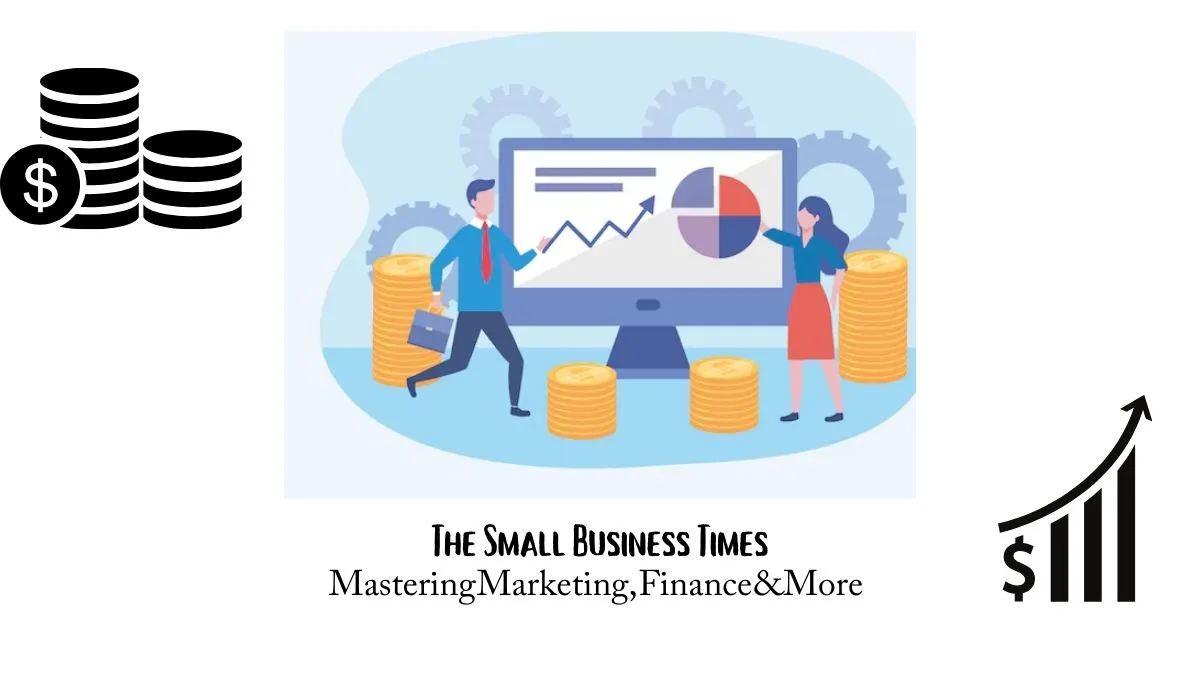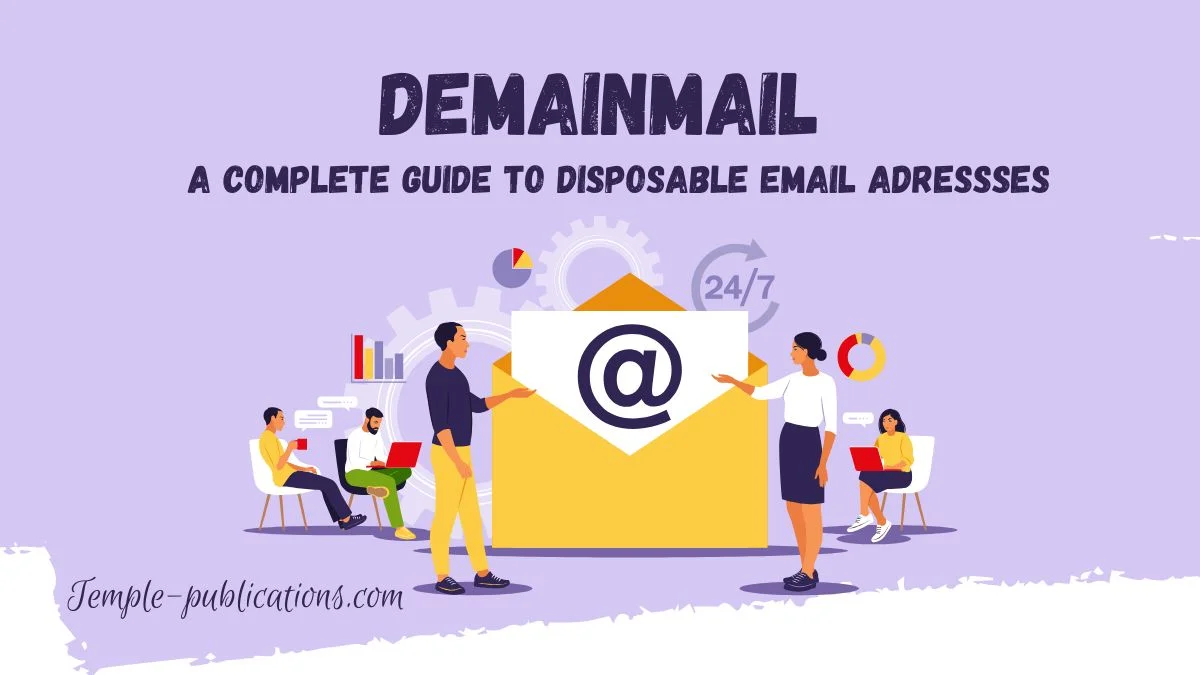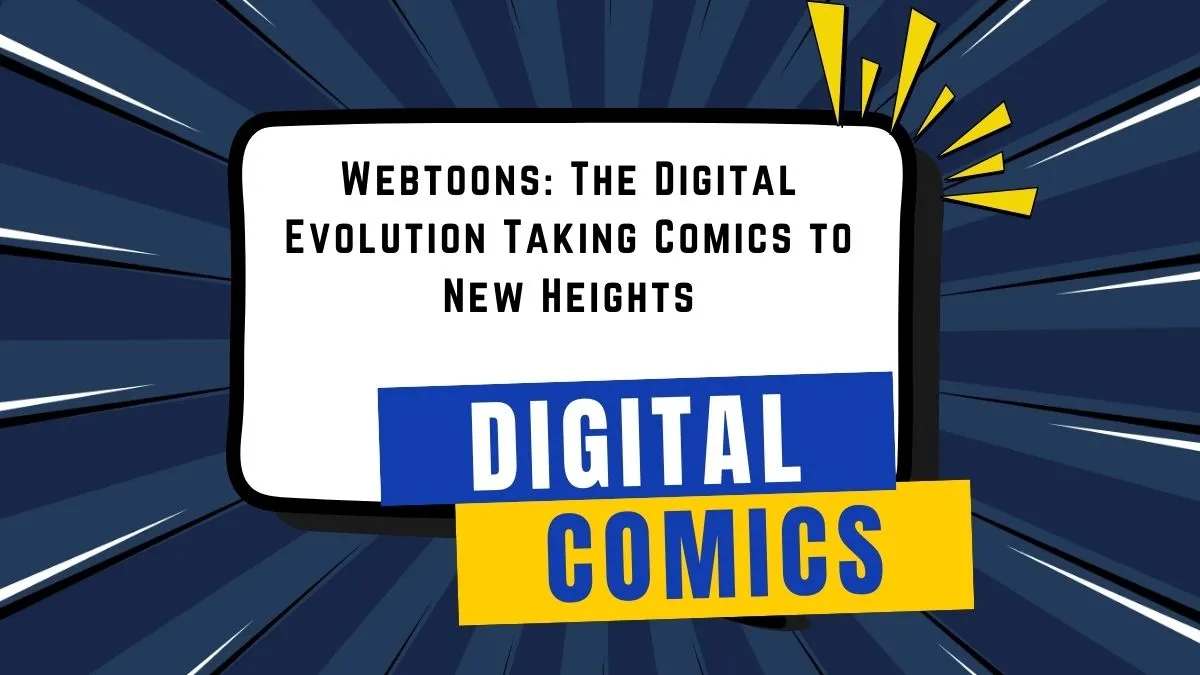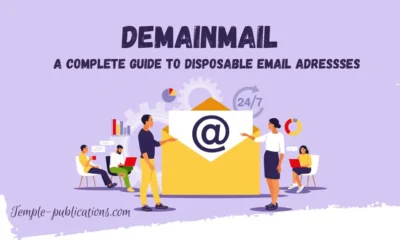GENERAL
The Small Business Times: Mastering Marketing, Finance & More

The Small Business Times serves as your primary source for obtaining expert direction on marketing, financial management, and business expansion. Key business strategies must be fully understood by entrepreneurs launching startups and existing business owners looking to scale operations. Our platform educates you on every aspect, from branding to budgeting and digital marketing to automation, in order to achieve business success. The industry professionals contributing to our insights bring practical knowledge from their experience. The Small Business Times provides owners with concrete guidance that allows them to overcome obstacles and capitalize on emerging opportunities. It offers trusted insights to help you stay informed while making better decisions, which will lead to your business success.
Business Planning & Strategy
A successful business relies on having a well-established plan. The Small Business Times emphasizes how small businesses should set targets alongside market research and competitive benchmarking. Entrepreneurs who create a business plan achieve three essential outcomes: they clarify their vision, develop operational structures, and secure funding. Choosing an appropriate business model leads to long-term profitability. Business planning becomes easier through the expert guidance that It provides, catering to both new startup ventures and established business strategy improvements. Business leaders can learn to align their operational objectives with market demands and make data-driven choices that foster sustainable business growth. Intelligent planning serves as the foundational requirement for business profitability.
Branding & Positioning
Effective brand positioning helps your business stand out against market competition. The Small Business Times provides specific methods to create a unique business identity by offering guidance on selecting appropriate branding elements, including color schemes and logos, while developing memorable brand statements. A well-established brand fosters trust, which builds customer loyalty and enhances business credibility. All platforms that present a cohesive approach help customers recognize the brand and trust its authority. It assists you in creating a lasting business impact, regardless of your new startup or rebranding goals. Expert branding techniques will teach you how to position your business effectively against rivals.
Marketing Strategies for Small Businesses
Every small business requires marketing as its main lifeline. Digital marketing, along with content creation and search engine optimization (SEO), receives expert guidance from Small Business Times. Targeted marketing approaches direct businesses to engage with their desired customers and boost revenue. Our company delivers tested and effective methods through a range of marketing strategies that include social media platforms, blogging, email campaigns, and local search engine optimization. Your business can reach its maximum audience potential through a combination of paid advertising and organic traffic methods that preserve your financial stability. It provides business owners with current market developments to create effective advertising campaigns that yield quantifiable results
Social Media & Online Presence
All businesses must establish a powerful digital footprint in today’s electronic environment. It shows entrepreneurs how to use social media for customer engagement while enhancing their brand exposure. Selecting appropriate social media platforms, such as Facebook, Instagram, LinkedIn, and TikTok, will determine the success of your vz strategy. Business growth potential increases dramatically through valuable content posting and targeted advertising, alongside effective customer feedback management. The combination of reputation management strategies and collaboration with influencers helps strengthen credibility. It delivers professional advice to design social media methods that establish meaningful customer relationships, develop brand leadership, and maintain lasting business expansion.
Financial Management & Budgeting
The success of any business depends heavily on effective financial management. The Small Business Times provides expert information about budgeting practices combined with cash flow management and financial planning strategies. Businesses that track their income and expenses remain profitable while minimizing debt risks. Business owners can use the 50/30/20 rule as a simple budgeting method to allocate their funds effectively. Financial stability results from minimizing unnecessary costs and maximizing revenue streams. Through expert financial strategies from it, organizations gain resilience while improving profitability to achieve lasting success. Through sound financial management, companies make superior investment choices that generate stable business growth.

Business Funding & Loans
Acquiring funding presents a challenge for most small business operators. It examines different funding options, including small business loans and grants, as well as venture capital and crowdfunding. Selecting appropriate funding sources plays a critical role for businesses that desire sustainable growth. Your business’s expansion relies heavily on choosing the right financial institution for funding. Alternative funding sources provided by the government, alongside various financial programs, support small businesses. The Small Business Times offers business owners insights to discover optimal funding options that reduce debt exposure while enabling sustainable growth..
Business Technology & Tools
Technology enhances operational efficiency and boosts productivity levels. Small Business Times conducts essential reviews of tools that include accounting software, project management applications, and customer relationship management (CRM) systems. Automation enables the reduction of manual tasks, resulting in increased operational speed and improved efficiency. Protecting sensitive data requires strong cybersecurity measures to be implemented. AI-powered business solutions, along with cloud-based platforms, transform the operational methods of small businesses. Through its resources, It empowers entrepreneurs to monitor emerging technologies and select appropriate tools that enhance operational effectiveness. Utilizing the right technology leads to efficient operations, resulting in lasting business success.
Scaling & Growth Strategies
Expanding a small business requires proper strategic planning. Small Business Times offers professional advice on scaling and provides strategies for timing and implementation. The execution of growth strategies involves hiring suitable team members, outsourcing tasks, and developing new product lines. Business growth becomes sustainable through the development of multiple revenue streams and market expansion. It delivers comprehensive information to business owners regarding both scaling risks and rewards. Our expert guidance allows businesses to establish second locations, launch new products, and implement process automation for efficient and profitable growth. The process of scaling intelligently yields both long-term business stability and increased profits.
Overcoming Challenges & Common Pitfalls
Any business encounters obstacles, which may include financial instability and marketplace competition. It provides specialized guidance to help businesses avoid typical failures. Proactive methods are essential for managing cash flow, as well as addressing market shifts and resolving customer complaints. Both burnout prevention and motivational maintenance hold equal importance for success. Businesses can leverage their experiences of failure to develop better strategies that transform problems into new opportunities. Real-world insights shared by experienced entrepreneurs on It help small businesses achieve success by overcoming their obstacles. The path to enduring business success requires continuous information acquisition alongside a readiness to maintain flexibility in operations.
Conclusion & Next Steps
Through its educational content, The Small Business Times provides entrepreneurs with the necessary skills to achieve business success. All businesses need fundamental mastery of marketing, finance, and branding, as well as growth strategies, to succeed. Businesses that adopt strategies supported by industry experts can both establish customer trust and attract new clients while securing enduring development.It delivers the most current industry trends and expert insights to its readers. Success in business depends on having a proper understanding, whether you begin from scratch or expand an existing venture. Make the decision to execute your business vision now by seeking trusted advice from it.
GENERAL
Närkes Elektriska: Sweden’s Leading Electrical

Established in 1931, Närkes Elektriska (NEA) is today one of the most trusted brands in creating sustainable energy solutions and electrical works in Sweden. Formally starting as a mere local affiliate to ASEA, it has since come to encompass the entire country as a recognized force that knows how to balance age-old crafting and next-generation technologies. It is not all about cables and currents, it is all about a smarter, greener Sweden; the intelligent energy infrastructure that helps NEA bring a smarter, greener Sweden to life. Having a broad spectrum of offerings that span smart home systems and automation, solar panels, and EV chargers, NEA is at the forefront of the energy transition in Sweden.
What Is Närkes Elektriska?
Närkes Elektriska is a fully autonomous, nationally established provider of electrical and energy services. NEA shows its activities in residential, commercial, and industrial segments, where its end-to-end solutions contribute to a sustainable world, energy efficiency, digital control, and climate-smart infrastructure. It is no longer installing complicated automation systems into factories or retrofitting homes with solar and EV capabilities – NEA ensures that every service is carefully adapted to fit environmental responsibility and precision expectations.
A Timeline of Growth: The Evolution of NEA
1931–1949: Roots as an ASEA Subsidiary
Närkes Elektriska was established in 1931 at a crucial moment in the Swedish electrification period. As ASEA (a precursor of ABB), NEA was instrumental in the deployment of power infrastructure in the Narke region. Its early investment in infrastructure formed the basis of rural electrification and industrialization on a broad scale.
1949–1982: Regional Expansion and Independence
NEA became completely independent in 1949 and began expanding regionally. The subsequent decades witnessed the company gain a reputation of reliability, quality and technical excellence in central Sweden. In schools, municipal buildings, manufacturing facilities, residential developments, and other projects, NEA was now the operations partner of choice that provided safe and lasting installations.
2005–2010: Digital Innovation & Smart Energy Shift
In the realization of the changing energy environment, NEA took a strategic leap in the early 2000s to move to digital systems and sustainability-driven services. The company started to implement smart automation, constructing energy-efficient control systems, and researching renewable energy systems. This step was the beginning of NEA becoming a tech-driven company.
2010–2024: Nationwide Consolidation and Strategic Partnerships
Over the past 10 years, NEA has nationally expanded its operations by creating alliances with municipalities, utility groups, and developers. The company has been spending lots of money in training, digitalization, and sustainable building. This consolidation step has enabled NEA to deal with large projects of infrastructure development that share the same local touch that characterizes its local origins.
NEA’s Key Service Areas
Närkes Elektriska’s diverse service portfolio reflects its commitment to innovation, safety, and sustainability. Here’s an overview of the company’s main offerings:
- Electrical Installations
From wiring residential homes to outfitting commercial properties, NEA ensures all installations meet the highest safety and efficiency standards. - Automation & Control Systems
NEA installs advanced PLC (Programmable Logic Controller) systems and building automation solutions to streamline operations and reduce energy waste in industrial and commercial settings. - Smart Home Integration
Through IoT-enabled devices and centralized control systems, NEA empowers homeowners to manage lighting, heating, security, and appliances more efficiently. - Solar Energy Solutions
The company designs and installs solar panel systems tailored to both private residences and commercial rooftops, supporting Sweden’s national renewable energy goals. - Energy Audits & Optimization
NEA conducts detailed energy assessments to identify inefficiencies and recommend upgrades, often helping clients reduce utility costs by 20% or more. - EV Charging Infrastructure
From individual home units to multi-vehicle commercial setups, NEA’s EV charging solutions support the growing shift toward electric mobility across Sweden.
How NEA Operates: Business Model & Revenue Channels
NEA’s business model is built around flexibility, technical expertise, and long-term value. The company serves multiple market segments through a mix of:
- Project-Based Revenue from large-scale installations and construction partnerships.
- Maintenance Contracts offering recurring revenue from schools, hospitals, and commercial properties.
- Consulting & Auditing Services for energy performance improvements.
- Residential Services such as smart home upgrades, solar installations, and EV charger fittings.
By combining traditional B2B projects with modern B2C solutions, NEA has successfully diversified its income while staying adaptable to market trends.
Vision 2030: NEA’s Commitment to a Greener, Smarter Sweden
Närkes Elektriska is strengthening its sustainability and innovation core as it looks across the horizon to 2030. Its future involves the increased collaboration of solar and wind energy to reinforce the Swedish renewable infrastructure. The other aspect is that NEA seeks to reskill its workforce in areas of automation, IoT, and compliance with the green economy. Focusing on smart grid preparedness, the company will facilitate decentralized network and real-time information networks. Also, NEA embraces circularities through waste minimization, environmentally friendly materials, and energy-efficient systems, which adhere to the national and EU climate objectives of Sweden.
Conclusion: A Legacy of Excellence and Innovation
Since its humble roots as ASEA, Närkes Elektriska has stuck to its core values of craftsmanship, reliability, and responsibility as one of the pioneers of smart energy and electrical services in the country. With the world headed toward a sustainable energy future, NEA is not only changing, it is leading the change. Having served more than 90 years with an eye towards the future, Närkes Elektriska is an indispensable ally in the creation of a smarter, cleaner, and more efficient Sweden.
GENERAL
What is Demainmail: A Complete Guide to Disposable Email Addresses

Your emails are not yours as you presume. Each announcement, newsletter, subscription, and download requires your email address, it appears, but once you give it to them, the avalanche of spam starts. In the era of ubiquitous digital advertising, security breaches, and privacy concerns, an email address may turn into the doorway to unlimited frustration.
What then is the solution? There is Demainmail, a free and temporary email that will allow you to get instant and completely anonymous access to an inbox that will disappear after you finish with it.
What Is Demainmail?
Demainmail is a temporary email service that allows users to generate throwaway email addresses for short-term use. These addresses require no registration and disappear after a limited period—perfect for signing up for services, downloading files, or verifying accounts without risking your personal inbox. Think of it as a digital cloak that lets you move through the web without leaving a trail of personal data behind.
Whether you’re dodging spam, testing websites, or avoiding intrusive tracking, Demainmail offers a lightweight, one-click solution for everyday privacy protection online.
The Vision Behind Demainmail’s Creation
Demainmail was founded and created to accomplish one of its missions, that is, to safeguard digital identities in a more intrusive online world. The spam bot, the data broker, and the aggressive marketing campaign all became commonplace in the 2000s, and users wanted a tool that could keep their inbox safe but that was still easy to use.
Rather than scaling up an email service to any number of features and login credentials, Demainmail creators shaved away the excess until all that was left was speed, ease of use, and privacy. They not only aim to prevent spam, but also to regain control over their digital imprint for people.
Core Features of Demainmail
Demainmail is packed with simple yet powerful functionalities that make it an essential tool for digital privacy:
- No Sign-Up Required: Generate and use an email address instantly—no account needed.
- Auto-Deleting Inboxes: Emails self-destruct after a set period (usually within an hour).
- Real-Time Inbox Access: View incoming emails without delay through a web-based interface.
- Multiple Domain Support: Choose from several email domains to bypass blacklists.
- Minimal Interface: Fast-loading and user-friendly with zero distractions.
These features combine convenience with security, making Demainmail one of the most efficient throwaway email platforms available today.
Benefits of Using Demainmail
Using Demainmail comes with several key advantages:
- Instant Privacy Protection: Keeps your real email hidden during risky or unnecessary interactions.
- Spam Reduction: Prevents your main inbox from being cluttered with ads and irrelevant emails.
- Safe Testing: Useful for developers, testers, and QA professionals working with form submissions or trial accounts.
- No Strings Attached: Great for one-time downloads, giveaways, or accessing gated content without long-term commitment.
For anyone tired of unsolicited emails or concerned about email-based tracking, Demainmail provides a lightweight but powerful solution.
Who Should Use Demainmail?
While anyone can benefit from a disposable inbox, some users will find Demainmail especially helpful:
- Privacy Enthusiasts: Those who don’t want to share personal information unnecessarily.
- Online Shoppers: People who want to access deals or create burner accounts without inbox spam.
- Software Testers & Developers: Professionals testing sign-up flows, contact forms, or verification systems.
- Students & Freelancers: Individuals looking for quick access to study materials, trials, or resource downloads.
If you use the internet regularly and value your time and privacy, chances are high Demainmail can improve your digital experience.
Demainmail vs Other Disposable Email Services
| Feature | Demainmail | TempMail | Guerrilla Mail | 10 Minute Mail |
| Registration Required | No | No | No | No |
| Inbox Lifespan | ~1 hour (adjustable) | ~10 minutes to 1 hour | Up to 1 hour | 10 minutes |
| Custom Domain Options | Yes | No | Yes | No |
| Interface Simplicity | Very clean | Moderate | Advanced (cluttered) | Very simple |
| Mobile Optimization | Yes | Yes | No | Yes |
Pricing and Access
Demainmail is presently free to use. No hidden fees, subscriptions, or freemium levels are involved. You can access it directly via its website, and no downloading or installation is necessary.
Whereas other disposable services provide more expensive plans with more email retention or custom inboxes, Demainmail has decided to keep things fairly simple and free starting out. But as subscription email services increase in popularity, perhaps paid features will be added later.
The Future of Demainmail
With growing concerns over data privacy, tools like Demainmail are becoming more relevant than ever. The platform may expand with features like:
- Mobile App Support
- Custom Inbox Lifespans
- Encrypted Temporary Storage
- Browser Extensions or API Integrations
As privacy regulations evolve (such as GDPR and CCPA), services that empower users with anonymity and control will only gain momentum. It is well-positioned to be part of that future.
Conclusion
Demainmail promises to be a welcome relief against the ceaseless spam and privacy invasion of the new life of the internet. It allows anyone to offer instant, disposable email addresses to users without any form of registration, offering a frictionless means of personal data protection and ease of use online.
Need to test an app, download a free PDF, or take evasive action against the spammy newsletter? Demainmail will get you there without using your true identity. Easy, quick, and safe, that is what a throwaway email needs to be.
FAQ Section
Is Demainmail safe to use?
Yes, as long as you’re not using it for sensitive or personal data. Emails are deleted after a short time and are not meant for secure communication.
How long do emails stay in a Demainmail inbox?
Typically, emails are stored for about an hour, though this may vary by domain and server load.
Can I send emails using Demainmail?
No, Demainmail is a receive-only service. It’s designed for temporary sign-ups and one-way communication.
Is Demainmail legal?
Yes. Disposable emails are legal to use, but abusing them for fraud or spam may violate laws or website terms of service.
GENERAL
Webtoons: The Digital Evolution Taking Comics to New Heights

Comics have been around for ages. But Webtoons? They changed the game. These digital comics, originally from South Korea, are designed for smartphones. No more zooming in on tiny panels. Just scroll. Simple. The ease of access made Webtoons a global hit. People wanted stories on the go, and Webtoons delivered. From romance to horror, every genre found a home. Unlike print comics, they bring fast updates, interactive comments, and community-driven engagement. Big names like LINE Webtoon and Tapas pushed the industry forward. And guess what? The boom isn’t slowing down. With billions in revenue and growing audiences, Webtoons are here to stay. Ready to dive into this digital revolution? Let’s explore.
The Vertical Scrolling Format: A Game Changer
Traditional comics have panels. Webtoons have a smooth, endless scroll. It’s intuitive, built for mobile screens. Readers don’t flip pages; they glide through the story. This format isn’t just convenient. It’s immersive. Dramatic pauses? Easily built with spacing. Suspense? Just scroll a little more. Unlike print, Webtoons guide emotions through pacing, not just panels. This vertical style lets artists experiment. They use creative transitions, cinematic storytelling, and even animated effects. It keeps readers hooked. Platforms like this and KakaoPage mastered this format. The result? A whole new way to experience comics. And let’s be honest. Who doesn’t love a story that flows effortlessly?
Webtoons vs. Traditional Comics: Key Differences
Comics have been loved for decades. But Webtoons? They flipped the script. Print comics rely on physical books or PDFs. Webtoons? Just open an app, and boom—you’re in. Unlike traditional comics, Webtoons don’t need speech bubbles cluttering the page. Text flows naturally, blending with the art. No weird zoom-ins, no awkward cropping. Also, it update fast. Weekly, sometimes even daily. Compare that to print comics, which take months between issues. Another big shift? Diversity. Webtoons embrace fresh voices and new genres. Traditional comics stick to superheroes. They bring slice-of-life, romance, horror—anything. The verdict? Webtoons aren’t just different. They’re redefining how we consume stories.
The Global Expansion of Webtoons
South Korea started it, but the world caught on fast. Webtoons broke language barriers, thanks to official translations and fan-driven communities. Platforms like LINE Webtoon and Tapas pushed them worldwide. The U.S., Japan, China—everyone’s on board. Hollywood took notice too. Netflix adaptations? Check. Anime series? Yup. Even K-dramas now come from this platform. The global love for Webtoons isn’t slowing down. Why? The stories feel fresh, diverse, and real. No cookie-cutter narratives. Just original content that speaks to readers everywhere. The Webtoon boom is far from over. More countries, more languages, more adaptations—It is shaping entertainment’s future.
The Business of Webtoons: A Billion-Dollar Industry
Webtoons aren’t just stories. They’re a money machine. Creators earn through ads, paid episodes, Patreon, and even merch. Some Webtoons turn into full-blown franchises—movies, games, even theme park attractions. The industry? Worth billions. Platforms like Naver Webtoon and KakaoPage rake in massive profits. The reason? Microtransactions. A few cents here and there add up fast. And let’s not forget premium content. Readers willingly pay for early access to their favorite Webtoons. The best part? Newcomers can still read most for free. That mix of accessibility and monetization keeps it thriving. This isn’t just a trend. It’s a full-fledged industry.
Why Readers Love Webtoons
They aren’t just comics. They’re an experience. Readers love them because they’re easy to access—anytime, anywhere. Unlike traditional comics, it don’t cost a fortune. Many are free, with optional paid content. Plus, the variety is insane. Love horror? It’s there. Romance? Tons. Action? Absolutely. And then there’s the community. Readers interact in comment sections, sharing theories, reactions, and memes. Webtoon creators even engage with fans directly. This interaction makes it feel alive, not just another story. The biggest reason people love Webtoons? They evolve. They change with trends, embrace new ideas, and never stop surprising.

How to Create a Successful Webtoon
Dream of making a Webtoon? It’s doable. Start with a strong story. Something unique, something gripping. Then, focus on art. You don’t need to be perfect, just expressive. Use digital tools—Clip Studio Paint, Procreate, or even Photoshop. Next? Consistency. Weekly uploads keep readers hooked. Promotion is key too. Social media, forums, even TikTok—spread the word. Monetization? Start with ad revenue, then explore Patreon, merch, or premium episodes. Most important tip? Engage with your readers. They’re your biggest supporters. Creating a Webtoon takes effort, but the reward? Worth it.
The Role of AI in Webtoon Creation
AI is changing everything, even Webtoons. Some artists use AI to generate backgrounds, speed up coloring, or enhance details. It saves time. But is AI replacing human creativity? Not yet. Webtoons thrive on originality and emotional depth—things AI still struggles with. However, AI tools are becoming more advanced. This platforms might soon integrate AI-assisted features for beginners. Some creators fear AI will flood the market with low-effort comics. Others see it as a tool, not a threat. One thing’s clear: AI is here, and it’s reshaping Webtoon creation.
Webtoons and Social Media: A Perfect Match
Social media made Webtoons explode. Twitter, TikTok, Instagram—these platforms amplify Webtoon visibility. Artists tease upcoming chapters, fans create viral memes, and entire fandoms rally around their favorite stories. TikTok, especially, is a powerhouse. A single viral video can skyrocket a Webtoon’s popularity overnight. Creators who leverage social media see faster growth. Engagement isn’t optional; it’s essential. A Webtoon without social media presence? It’s like shouting into the void. To succeed, creators must be where their readers are—online, scrolling, and searching for the next big story.
Challenges and Controversies in the Webtoon Industry
Webtoons may be booming, but they’re not without problems. One big issue? Plagiarism. Some artists steal ideas or styles, leading to messy legal battles. Another concern? Creator burnout. The pressure to release weekly updates can be brutal. And let’s talk pay. Not all Webtoon artists earn well. Some platforms offer low revenue splits, leaving creators struggling. There’s also the debate over free vs. premium content. Some readers hate paywalls, while creators need income. It’s a tricky balance. Webtoons revolutionized storytelling, but the industry still has growing pains.
The Future of Webtoons: What’s Next?
What’s coming next? More innovation. More global reach. Webtoons might soon integrate VR, interactive elements, or even AI-generated stories. Platforms will expand, bringing more diverse voices. The business model? Likely to evolve, offering better revenue for creators. And print comics? They won’t disappear, but Webtoons will dominate. The future of Webtoons isn’t just bright—it’s limitless.
Conclusion
Webtoons transformed comics. They made storytelling more accessible, interactive, and global. Whether you’re a reader, creator, or investor, the Webtoon wave isn’t slowing down.Therefore, it’s time to embrace the future of digital comics.
-

 BIOGRAPHY1 month ago
BIOGRAPHY1 month agoBehind the Scenes with Sandra Orlow: An Exclusive Interview
-

 HOME7 months ago
HOME7 months agoDiscovering Insights: A Deep Dive into the //vital-mag.net blog
-

 HOME10 months ago
HOME10 months agoSifangds in Action: Real-Life Applications and Success Stories
-

 BIOGRAPHY8 months ago
BIOGRAPHY8 months agoThe Woman Behind the Comedian: Meet Andrew Santino Wife






























